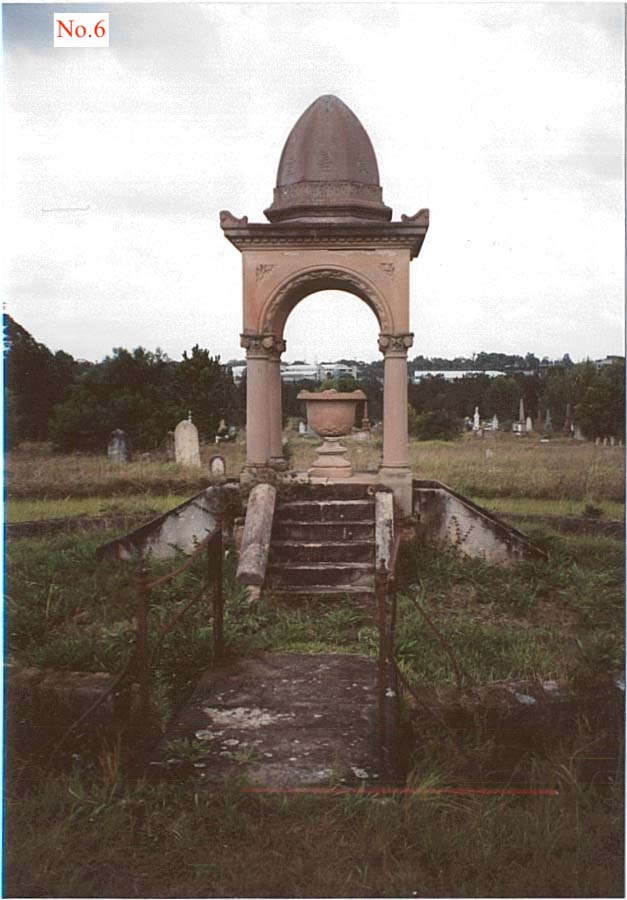
Located in Sydney’s Rookwood cemetery, the Quong Sing Tong (廣善堂) pavilion erected in 1877 is representative of one of the most characteristic aspects of Chinese-Australians in the 19thand early 20thcentury – the practice of transporting the bones of the dead back to their home villages. [See No. 21] Bones rather than bodies, as the usual practice was to bury a body for several years then to collect the bones of a number of people at the same time, to be “returned to China”.[1]
From the very beginning of the movement of Pearl River Delta villagers across the Pacific to the Californian and then the NSW and Victorian goldfields, it was the practice to periodically gather together the bones of those who died in these far away lands. Associations organised on the basis of the various districts of the Pearl River Delta such as Taishan, Zhongshan, Dong Guan, etc., would co-operate to organise the exhumations and the shipment back to the many villages. [See No.45]
Reports of bones return begin at least from 1860 and the Rev Young reported bones being returned from Melbourne in “small wooden cases, or carpet bags” in 1868.[2] Later we know that the Tung Wah Hospital in Hong Kong became the transfer point for bones from around the Pacific and elsewhere before they continued their journey onto their villages with local newspapers regularly announcing the arrival of “departed friends” for collection by relatives.
The Quong Sing Tong (廣善堂) association that erected the Rookwood pavilion in 1877 is today unknown. It may have been an early attempt to create an association combining all the districts but having raised the money for the pavilion then dissolved. It was the district associations that largely handled these removals, including making donations to the Tung Wah Hospital [see No.71] and advertising in newspapers such as the Chinese Australian Herald 廣益華報 in the early 20thcentury requesting information about the identity of the dead so that their bones could be returned to their villages, and listing stores as contact points for passing on this information.
The best record we have on the return of bones comes from the “Old Chinese Section” of Rookwood Cemetery, Sydney where the pavilion is located. From 1875 to the late 1930s, a peak of 75% of the burials in the “Old Chinese Section” were, “returned to China”, with a yearly average of 55% to 65%. In the 1890s, it was said to cost “£10 to remove a man’s bones from the country”.[3]
Sydney’s Rookwood Cemetery statistics show an increase in exhumations in the last decades of the 19th century. After this there is a gradual reduction in the proportion of burials that are returned as well as a fall in total burials as the population of the China-born in Australia declined in the 1920s and 1930s. There was a tapering off of returns after 1930, and after 1938 there were very few removals until after World War II. Many of those who died after 1931 were exhumed between 1946 and 1948, after which only 10 more were removed in 1950, with the last recorded exhumation from this section of Rookwood Cemetery in 1962.
See also: No. 75 Who was Ah Sam?
[1] “Returned to China”, usually written in red ink, indicated exhumed plots. Rookwood Cemetery, Anglican Trust: Register of Burials in the Necropolis at Haslem’s Creek, under the Necropolis Act of 1867, 31 Victoria, no.14, ‘Chinese Section of General Cemetery’.
[2] The Ballarat Star, 8 September 1868, p.2. Also Launceston Examiner, 31 May 1864, p.5.
[3] Report of the Royal Commission on Alleged Chinese Gambling and Immorality and Charges of Bribery Against Members of the Police Force. Appointed August 20th1891. Government Printer, Sydney, 1892, p.15, lines, 486-7.


Sadly my Chinese great grandfather had a “destitute burial” in 1939 in Rookwood General Cemetery. My grandmother was surprised when I told her this years ago when researching the family as she said members of her family gave another family member money towards a proper burial. This was also to return his bones to his home in China. Members of the family were unable to travel from the country area to the funeral as there was also another family death close to that time, so relied on a family member to undertake family commitments.